Cilantro, avocado, corn tortillas. Those everyday items in a california supermarket, the kind of thing one doesn’t think twice about, are, alas, far out of reach here in Istanbul. Yes, cilantro is available, sometimes, in little clamshell packs for exorbitant prices in a few of the high end groceries across town, and avocados do appear for short seasons in winter and summer. But no tortillas, no masa harina. and the only dry corn I could find was broken kernels for making a local variation of corn soup (or feeding to the birds).
While I can’t do much about the avocadoes (well maybe, if I can get a greenhouse going, these little starts from the compost pile might be good, in about 12 years or so),
now I have the garden I can grow cilantro,
and in keeping with my goal to wind down on suitcase imports, I had a long-term plan for the tortillas.
I got some dent corn seed to plant last year along with the sweet eating corn (none of that here either; boiled and roasted ears are sold everywhere from street carts but it’s a chewy, starchy experience, and the “sutlu” or milky corn sold in the spring in the markets is still the field, or dent, corn type). I brought food-grade lime and a hand-crank flour mill back with me from a trip to the US. Finally, I read up on nixtamalization. so if all went well by next fall I’d have some dry corn to make my own masa.
Then I lucked out. At the wednesday market, a small farmer selling greens, lemons and cornflour had bags of whole yellow corn, instead of the broken kernels. I bought two bags I hadn’t seen the whole kernels before and he hasn’t had any more since then, so it is clearly seasonal – and I didn’t have my camera with me, so no pic).
I came home and set about nixtamalizing the corn, that brilliant process developed by Native Americans to maximize the nutrition (and the flavor) of the corn by soaking it in lime or lye. I brought the corn to boil with the lime and let it rest. Different websites have different views about how much lime, how long to boil, how long to soak, depending on whether you are making tortillas or tamales. I used this one, but settled on bringing to boil, boiling for about 5 minutes, and soaking overnight.
In the meantime, I realized that I had been so focused on the liming that I hadn’t really thought through how exactly I was going to turn the soaked grain into masa. Since lugging a metate across time zones was out of the question, even for me, I did more research online to figure the best way to grind the corn once it was ready – dry or wet, if so, how much water, etc. this website helped.
The next day, after many, many washings, rubbing the kernels vigorously in a large bowl of water, rinsing and repeating, I ended up with a clean bowl of corn, ready for grinding. Well, that is, if you want it whole-grain. Many sites say to remove the nib, the little brownish point at the end. If you are going to make hominy for recipes like posole, I think this is worth it, because removing the nib allows the hominy to bloom, like a popcorn kernel does when popped. but for grinding I think it’s both far too time consuming and unnecessary (I did spend two hours on the first batch, painstakingly doing this, and that’s when I decided whole grain was good enough for me – healthier anyway, right?).
I tried my mixie-grinder, but it didn’t work without excessive amounts of water. I hadn’t used my hand crank flour mill yet and was afraid to mess it up if the grains were somewhat wet, since the instructions weren’t clear on that point. I decided to try my luck with the Omega juicer, which says it can also grind flour, with a pretty obscene looking augur.
It worked.
It took several passes through the machine to get to a fineness that I found acceptable. I added a bit more water each time, trying to achieve the feeling I remembered from working with dry masa harina and water (I never lived close enough to a tortilleria to get fresh masa). A soft-ish dough, best described as similar to playdough.
Next up, pressing into tortilla form. I have an inexpensive metal press, and I experimented with plastic wrap, parchment paper and a ziploc bag cut into two circles the size of the press, which in the end was what worked the best (sorry no pics of the process).
Cooking was the easy part. dry on a griddle till small brown spots formed.
These are thick still, a bit “homestyle”; I haven’t gotten the texture down perfectly yet; it will take a few more rounds and I am not sure if I’ll ever get to the point of being able to flatten the disks by slapping them back and forth between my palms.
After all this work, my admiration for all those women who have done/still do this incredible work, and my appreciation for certain modern industrial processes have grown considerably. Would I do this if I could go to the local Whole Foods or even Safeway to pick up a pack? I am not sure.
But the taste, of corn, freshly ground and cooked is pretty fine, and with some refritos and melted fresh kasar (a Turkish cheese similar to jack), even better. Best of all, it no longer has to be a special occasion.
With this summer’s cilantro and tomatoes from the garden, well, I may not even miss the avocado. at least not till next year.
UPDATE: – from seed to plate – my dent corn did grow, albeit not splendidly, and a few ears yielded up about 1 pound of dry white corn (minus the ears the Angoumois moth got into, but let’s not dwell on that – where did they come from anyway?), enough for a nice size chunk of masa. I’ve also since learned that it’s best not to rinse the lime excessively from the soaked kernels, thanks to this site, and to grind the grains with a bit more water, which makes the dough more pliable (I was able to pat out a tortilla by hand). I also believe now that i could nixtamalize the broken corn that is available here as well, with a shorter boiling/soaking time. It won’t work for pozole, but fine for masa.

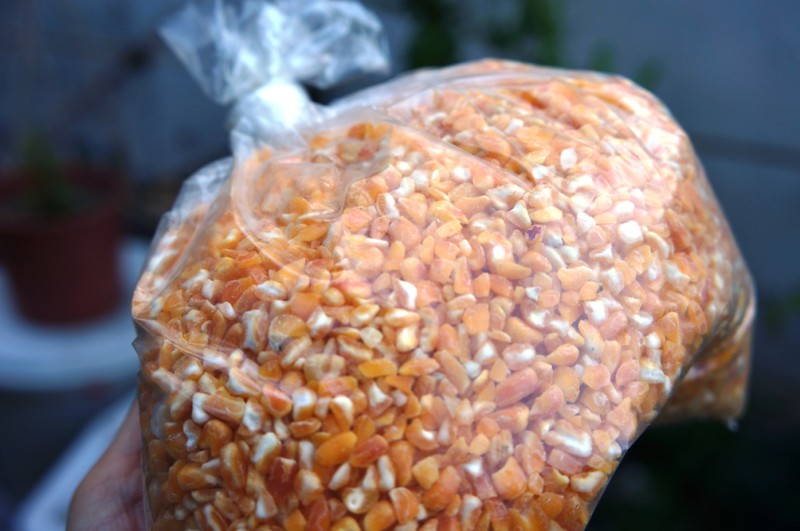
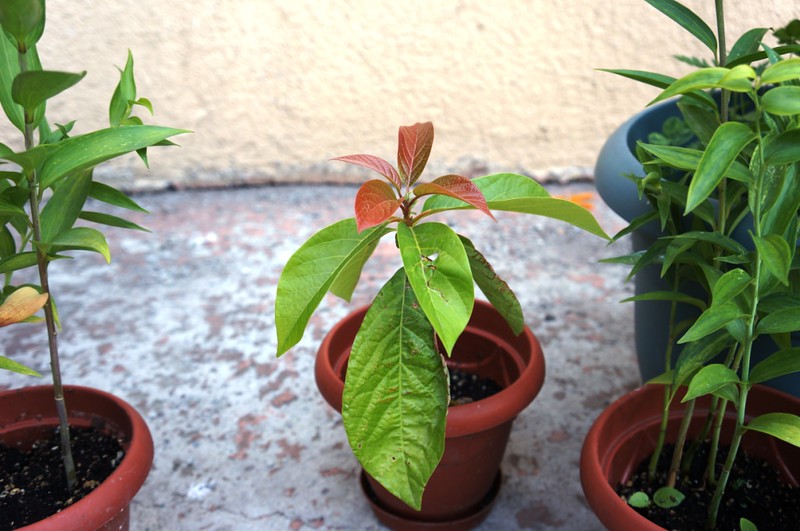
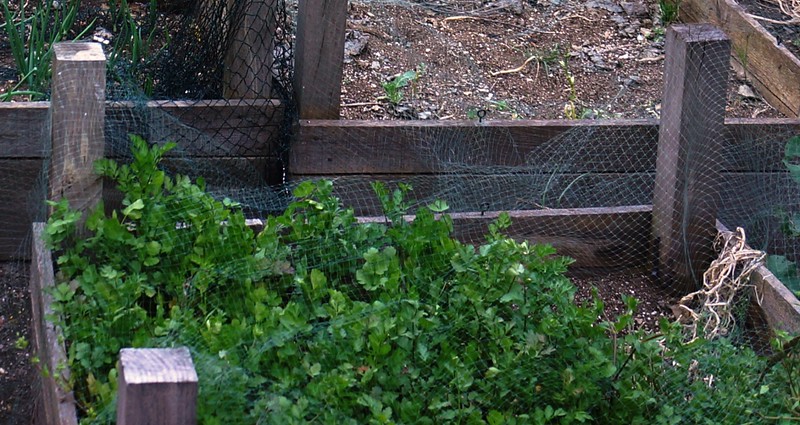

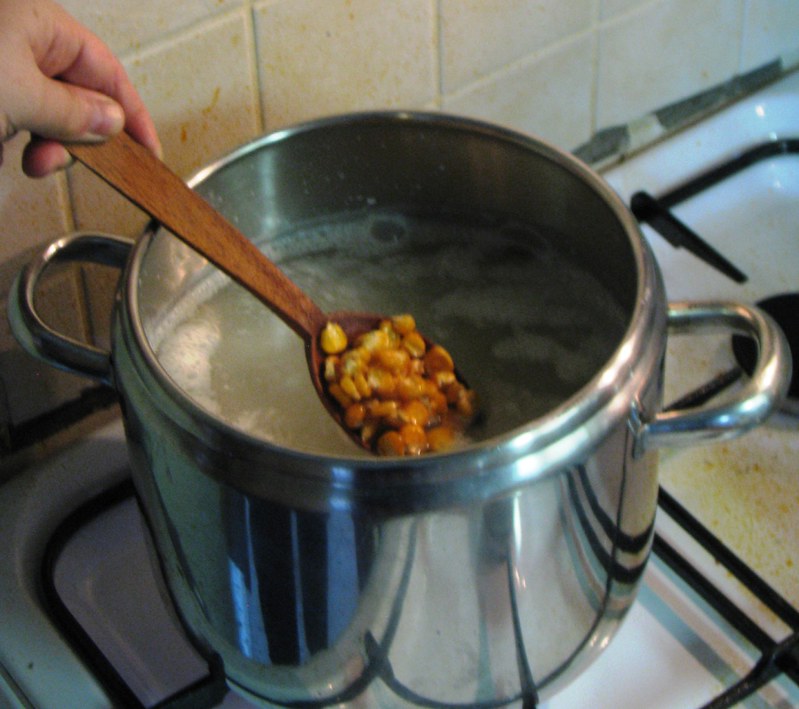
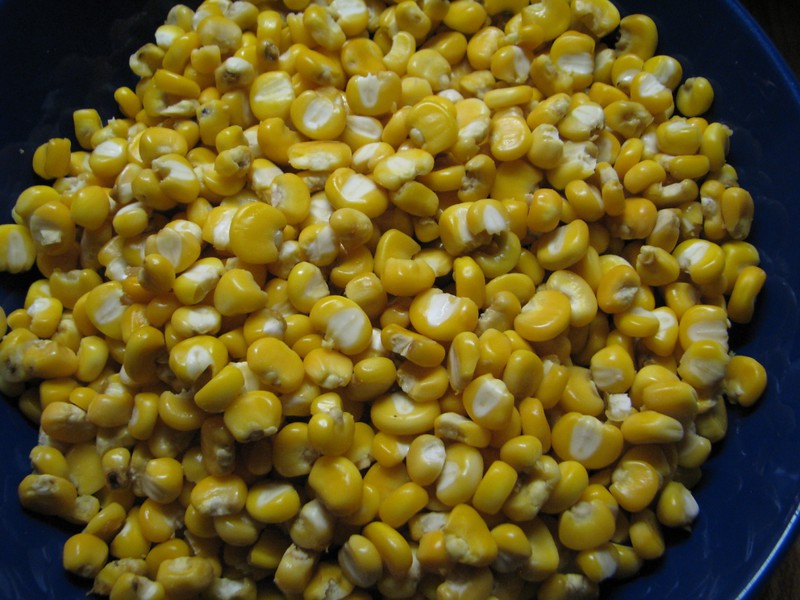

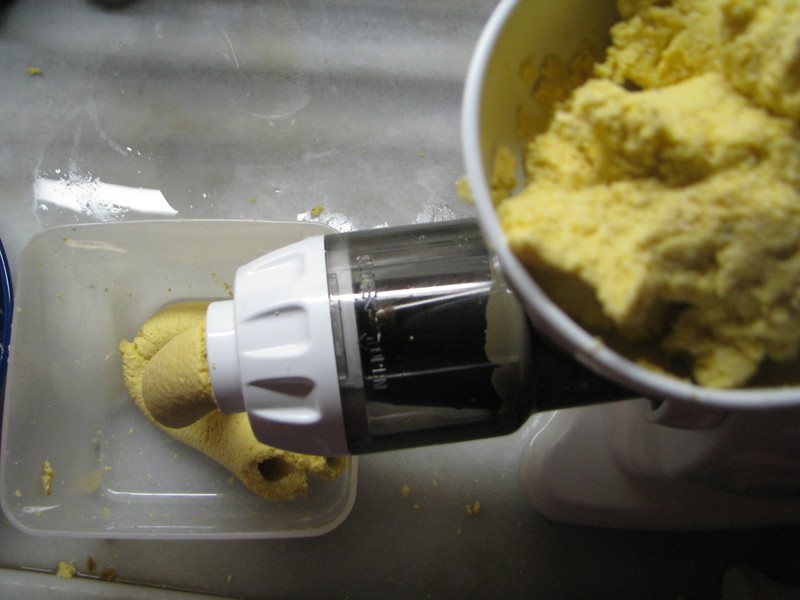

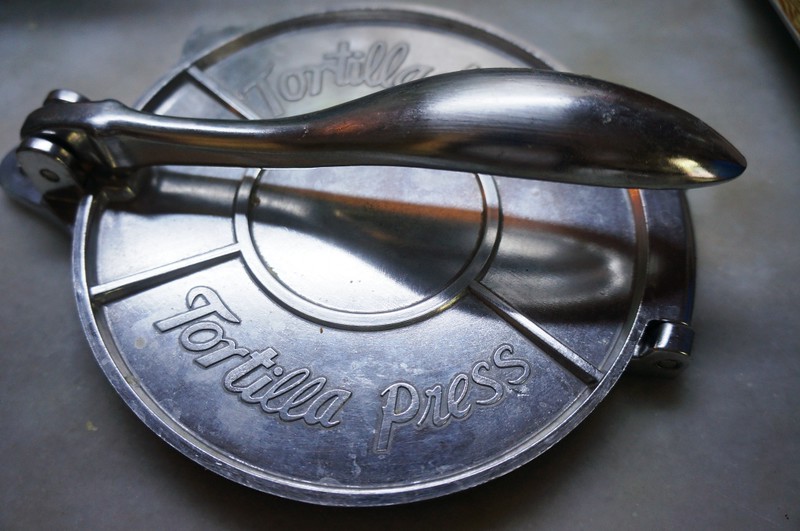
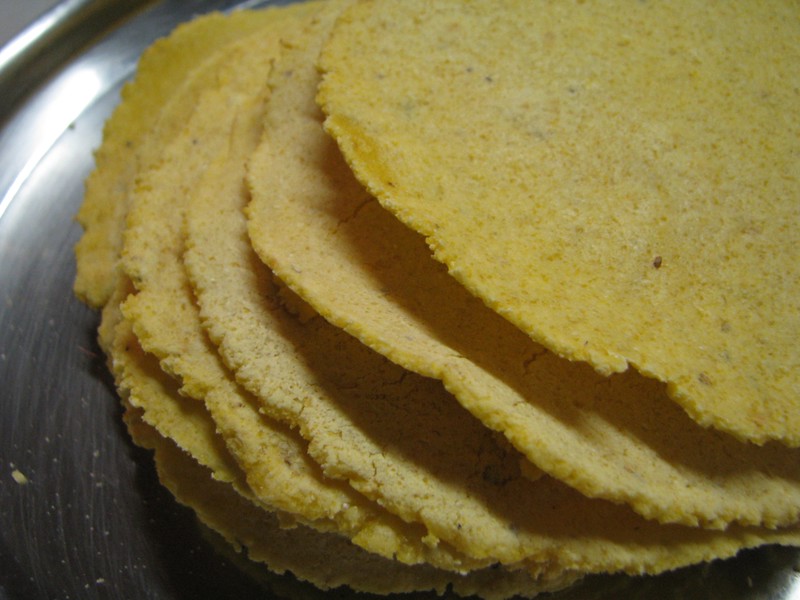

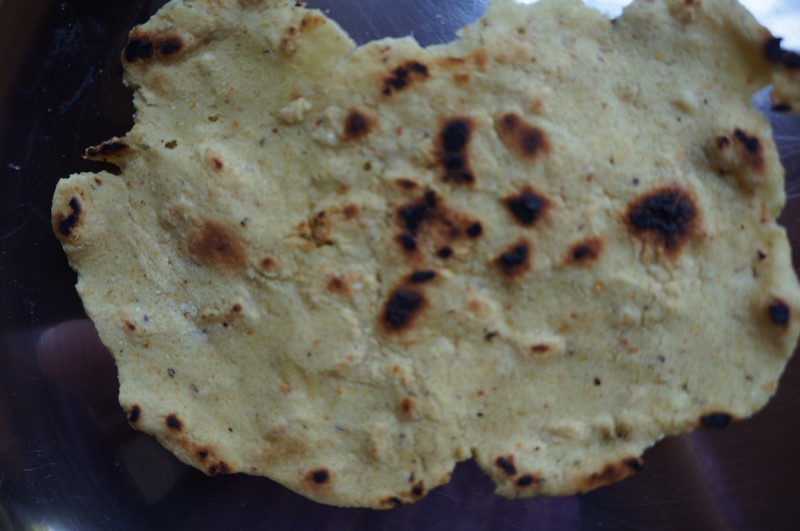
Oh, what a journey! You honor the roots of whence my family comes from. This is the way to treat corn and love it, explore it, long for it.
And by the way, the press you have, yes, that is the way we use it, with plastic. Only ours look a bit heavier. Before those presses, my great grandmother used an iron, the old kind, for making small, fat tortillas made out of wheat and aniseed. She would shape the tortillas by hand, then place them on the comal and put the iron on top. I still have her iron, which my mother inherited!
thanks! yes i think my press was very inexpensive aluminum… will look for a heavier one next time. the iron is really interesting! because the third time i made tortillas, they were too wet — i had frozen the masa, and i won’t do that anymore (i’ll just freeze the nixtamal corn), because something about the freezing changes the quality and it was no longer sticky enough to hold together well. so first i patted out the tortillas onto the griddle but once the griddle was hot i couldn’t do that anymore. i ended up taking a piece of parchment paper and oiling it lightly, then patting out the tortilla onto the parchment, and flipping it onto the griddle. once it stuck to the hot surface of the griddle, i was able to peel back the parchment. but i could see also just putting a thicker tortilla onto the griddle and then using a press, like the iron, maybe with some parchment to keep it from sticking. it’s nice you still have the iron!
Wow. The tortilla press looks exciting. Then I thought, you could probably make poppadoms with the same thing hehe
Where did you find limes? And do you live anywhere near Haci Osman metro. I don’t have your experience with making corn tortillas, but would pay a high price for yours. I arrived too late this year to be successful with cilantro. Tried to grow it in little flower puts but it never reached much size. I am miss Mexican food so much! It is the one food I can eat every day, breakfast lunch and dinner.
Fellow California in Turkey,
Lesley
lesley, thanks for the compliment. sorry for the late reply; had an issue with comments on the site that is now fixed. i don’t live near haci osman. you should plant cilantro now, whether outside or in a box. it likes cold weather! i planted seeds in october that have germinated now and if they behave like last year, i will have a good crop by early spring (even survived last year’s snow). it’s a slow grower but you can always steal a few sprigs once it gets going. i found limes at macro in kanyon as well as in nisantasi.
Thanks! Wow!! you found limes! A friend brought me some lime juice back from a US trip. I am embarrassed by all the typos in my original post. Was still getting used to a Turkish keyboard. I found corn flour, but it is too fine I think. I tried several times to make tortillas without success. So I have settled for flour. Is there any chance I could boil popping corn, blend it and add to the existing corn flour?
I learned how to freeze cilantro and to make cilantro pesto..to have the flavor on hand year round. I have a couple of avocados growing..but from Turkey avos and they are not as flavorful. So I am going to ask some folks back home to send me their pits..not that I will live to eat them.
Sometimes you can find fresh jalapeno..I am trying to grow some now …anyway, it is nice to speak with someone else who misses all the things I do. Tried to go to El Torito..but by the time I made the trip, it was gone.
It is so nice to read these comments and this blog about the food I love. I grew up on daily Mexican food, my mother being Mexican and Spanish.
thanks for such great post